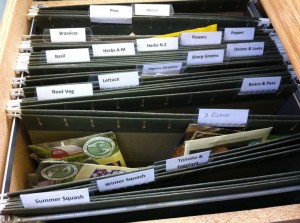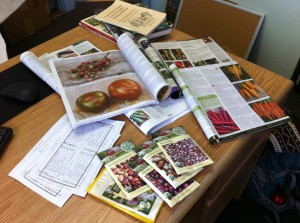by Tara Laidlaw, Farm Director
This is the time of year when a farmer gets to take a little bit of a break…kind of. While there’s not much to do outdoors, there’s lots of planning that has to happen before the ground thaws in the spring. I have to decide the whats, wheres, and whens for each plant I’d like to grow. In order to make those decisions, I have to think about whether the plant will prefer the cooler temperatures of spring and fall to the hot summer days, and whether it will like a full day of sun or would do better in some shade. I have to consider what grew in that spot last year: some plant diseases can stay in the soil for years, so I have to make sure the same crop isn’t growing in the same place.
And some plants are considered “heavy feeders,” which means they pull a lot of nutrients out of the soil. In order to keep the soil from becoming depleted of nutrients, I have to shift plants’ locations every year. I also have to take into account whether certain plants are good at being neighbors. While some pairs of plants are considered “companion plants” – that is, they help each other grow by using different nutrients, deterring pests, and so on – other pairs are enemies and will actually stunt each other’s growth if planted side by side! To top off all these considerations, I have a stack of seed catalogs on my desk offering thousands of different varieties of vegetables. Most of our seed for this year was donated by seed companies (including Seed Savers Exchange, High Mowing Seed, and Seeds of Change), but to fill in the gaps, I need to decide which varieties will offer the best combination of taste, productivity, and interestingness. And that’s a big challenge when every single choice looks exciting!



